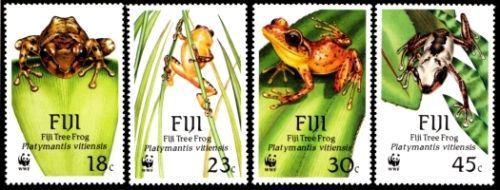In the past three decades, declines in populations of amphibians (the class of organisms that includes frogs, toads, salamanders, newts, and caecilians) have occurred worldwide. In 2004, the results were published of the first worldwide assessment of amphibian populations, the Global Amphibian Assessment. This found that 32% of species were globally threatened, at least 43% were experiencing some form of population decrease, and that between 9 and 122 species have become extinct since 1980. As of 2010, the IUCN Red List, which incorporates the Global Amphibian Assessment and subsequent updates, lists 486 amphibian species as "Critically Endangered". Experimental studies have shown that exposure to commonly used herbicides such as glyphosate (Tradename Roundup) or insecticides such as malathion or carbaryl greatly increase mortality of tadpoles. Additional studies have indicated that terrestrial adult stages of amphibians are also susceptible to non-active ingredients in Roundup, particularly POEA, which is a surfactant. Atrazine has been shown to cause male tadpoles of African clawed frogs to become hermaphroditic with development of both male and female organs. Such feminization has been reported in many parts of the world. While most pesticide effects are likely to be local and restricted to areas near agriculture, there is evidence from the Sierra Nevada mountains of the western United States that pesticides are traveling long distances into pristine areas, including Yosemite National Park in California.
Source: Wikipedia
https://en.wikipedia.org/wiki/Decline_in_amphibian_populations#cite_not…

- Log in to post comments
